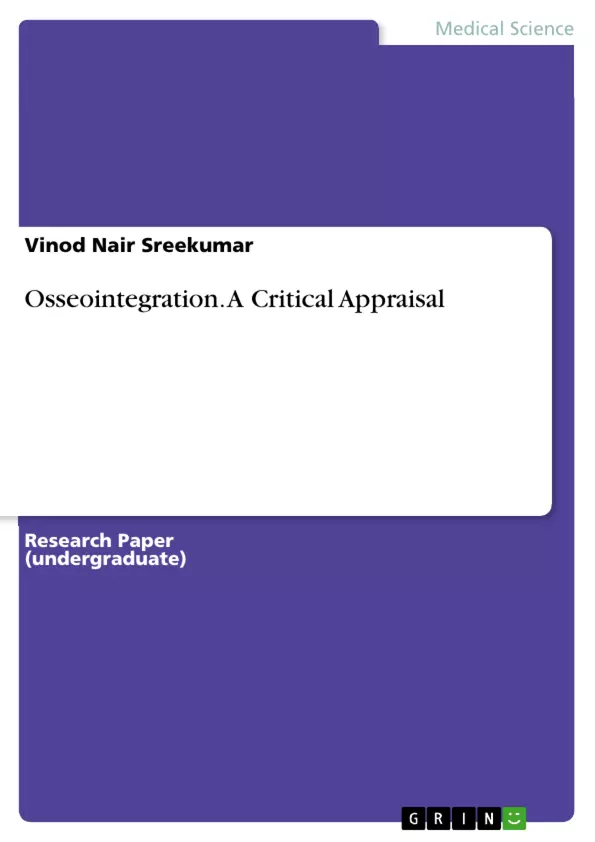Osseointegration of dental implants, a special field of dentistry, is dealing with the rehabilitation of the damaged chewing apparatus due to loss of the natural teeth. It is currently the most intensively developing field of dentistry. Missing teeth can be replaced by dental implants (artificial roots), which are inserted into the root-bearing parts of the mandible or maxilla.
The success and long-term prognosis of implant prosthetic therapy depend primarily on the anchorage of the implant in the jawbone, i.e. on the osseointegration. Today, there are ever increasing demands from patients with missing teeth for masticatory function and aesthetic appearance of their replaced teeth to be restored and for shortening of the period of osseointegration of the implants, which takes a relatively long time (3-6 months). The successful insertion of a biocompatible material into living tissue with little to no evidence of rejection has revolutionized medicine and dentistry.
Inhaltsverzeichnis (Table of Contents)
- Introduction
- Biomaterials used in guided bone regeneration (GBR)
- Surface modifications of Ti implants to improve osseointegration
- Physicochemical methods
- Biochemical methods
- Animal models for the investigation of osteogenesis and osseointegration
Zielsetzung und Themenschwerpunkte (Objectives and Key Themes)
This text aims to provide a comprehensive overview of the field of osseointegration, focusing on the use of titanium implants in dental implantology. It explores the current state of research and development in this area, including the use of biomaterials and surface modifications to improve osseointegration. The text also discusses animal models used for investigating osteogenesis and osseointegration.
- Osseointegration of dental implants
- Biomaterials used in guided bone regeneration (GBR)
- Surface modifications of Ti implants to improve osseointegration
- Animal models for the investigation of osteogenesis and osseointegration
- Clinical considerations and future directions in osseointegration research
Zusammenfassung der Kapitel (Chapter Summaries)
- Introduction: This chapter provides an overview of osseointegration, its importance in dental implantology, and the historical development of this field. It discusses the definition of osseointegration, the role of titanium implants, and the challenges associated with achieving successful osseointegration.
- Biomaterials used in guided bone regeneration (GBR): This chapter delves into the use of biomaterials in guided bone regeneration (GBR) procedures. It examines various biomaterials such as xenografts, beta-tricalcium phosphates (TCP-B), and calcium phosphate cements (CPCs), highlighting their properties and applications in GBR.
- Surface modifications of Ti implants to improve osseointegration: This chapter explores different methods for modifying the surface of titanium implants to enhance osseointegration. It discusses both physicochemical and biochemical methods, exploring their mechanisms of action and potential benefits.
- Animal models for the investigation of osteogenesis and osseointegration: This chapter examines the use of animal models in research related to osteogenesis and osseointegration. It discusses the importance of animal models, the different models available, and the considerations for choosing an appropriate model.
Schlüsselwörter (Keywords)
The main keywords and focus topics of this text include: osseointegration, dental implants, titanium, biomaterials, guided bone regeneration (GBR), surface modifications, animal models, osteogenesis, biocompatibility, and clinical applications.
- Citation du texte
- MDS, BDS Vinod Nair Sreekumar (Auteur), 2018, Osseointegration. A Critical Appraisal, Munich, GRIN Verlag, https://www.grin.com/document/418814



